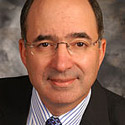09:35 AM
5 Reasons Why One In Every Three U.S. Equities Shares Is Traded In the Dark
In March, 32.9 percent of U.S. equities trading volume was executed away from registered exchanges. With dark pools and internalized flow mysterious to even the trading professional, one-third of equity trading executed outside the exchange framework is significant.
While we instinctively think of non-exchange orders as flow that is diverted to dark pools, Tabb Group estimates that dark pools make up only about 13 percent of U.S. equities volume. The balance and larger portion of this off-exchange trading is executed via internalization, the practice in which brokers match orders internally on their trading desks - before the orders are sent either to dark pools or exchanges. In 2008, internalized and dark orders comprised 15 percent of volume; today, that has more than doubled. The million dollar question is: Why is so much U.S. equity trading now making its way outside of traditional exchanges?
The simplistic answer to this dramatic shift is that trading off-exchange prevents market impact. But trading (as in life) is never that simple. While market impact is a key motive, execution cost, matching rate and trading opportunity have a significant impact on the growth of off-exchange executions as well.
1. Retail order flow has always been internalized. Most retail brokers, instead of supporting a trading desk, sell their order flow to wholesalers that, by SEC law, are allowed to trade against this flow. Wholesalers historically traded against the most profitable market orders while sending the balance to the exchanges. Increasingly, however, wholesalers are getting better at disposing of the orders they don't want to trade against by using dark pools and other electronic means before paying an exchange to execute these orders.
2. Reduced volumes are pushing traders into the dark more quickly. Tabb Group's most recent conversations with buy-side traders reveal that they are turning to internalizers and dark pools much earlier in the trading process than in the past. As U.S. equity volume fades - volume is down 14 percent from the same time period in 2011- liquidity is simply harder to find, and the search for matches often leads traders off-exchange.
3. An increasing amount of order flow is being managed electronically. As markets increasingly fragment, humans don't have the facility to track liquidity across 50 venues operating at increasingly lower latencies. While the old NYSE (pre-Reg NMS, circa 2005) matched orders in seconds, today matching times are measured not in milliseconds, but in microseconds (1/1,000,000 of a second).
[Thanks to electronic markets, high-speed trading and intelligent algorithms, today's buy-side trader must evolve to survive. Meet the Next Generation Trader. ]
4. Managing cost has become critical as commissions, especially the fees associated with execution, are under downward pressure. While the buy side wants to allocate more of its commission dollars to research, corporate access and the underwriting calendar, traders are allocating less of their commission wallet to execution. This puts pressure on trading desks to reduce internal expenses, a significant portion of which are exchange fees. If trading desks can match orders internally, then they don't need to pay exchanges for execution.
5. Dark pools and internalization engines are becoming more sophisticated. Increasingly, not only are dark pools sending messages to other dark pools, but trading desks are connecting to liquidity providers and giving them notice of incoming flow. Historically, trading desks matched buy and sell orders that were received on the desk concurrently. As technology now allows messages to be sent and responded to in microseconds, trading desks now can send out messages to solicit the other side of the trade.
If an order can't be found directly, it then moves into the firm's dark pool. If the order still is unable to be matched, the dark pool sends messages to a wider array of market participants to trade. If still unexecuted, the order is sent to other dark pools that in turn send messages to a wider group of traders. And finally, if by the time the order has gone through two or three different dark pools and messaging cycles it still remains unexecuted, it then goes to the exchanges. This all occurs in a fraction of a second, all managed by a series of electronic routing engines.
Bottom of the Barrel
In this day and age, exchanges only get orders that almost no one in the professional community wants. But while the exchanges are furious that nearly 33 percent of order flow is being dragged away from them, does anyone care? And is this really bad?
Unfortunately, that's hard to determine. While some traders are upset that their orders are being surreptitiously spammed around the market and others complain about fleeting quotes and unexecutable liquidity, there's a core group of traders who view higher dark execution rates and lower commission levels as outweighing the information leakage messaging barrage. It's also fair to ask that if execution were that terrible, wouldn't traders stop sending orders to the more egregious spammers?
Either way, good or bad, it will be interesting to see if or what the SEC will do as the internalization and dark trading activity approaches the 40 percent level. This will certainly be a trend to watch.
Larry Tabb is founder and CEO of Tabb Group, a financial markets strategic advisory firm. Cheyenne Morgan is an analyst with Tabb Group focused on the capital markets.
Larry Tabb is the founder and CEO of TABB Group, the financial markets' research and strategic advisory firm focused exclusively on capital markets. Founded in 2003 and based on the interview-based research methodology of "first-person knowledge" he developed, TABB Group ... View Full Bio




























